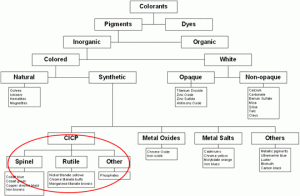Energy Efficient Metal Building
In another post, I commented on thermal bridging and how metal is super conductive. It takes 10′ of steel to have the same r-value of 1″ of rigid insulation. So do the math…without a thermal break metal buildings perform quite poorly.
However, it doesn’t have to be this way. If you are building a pre-engineered metal structure you are not limited to fiberglass insulation, or “bag and sag” as it is commonly referred to. Why is it called that? Well, once its installed, the material is generally compressed between the purlins and the girts (wall or ceiling) and at that area, the advertised r 19 (minimum) is performing at maybe a 2 or 3. That is not a sufficient thermal break, so we get condensation inside that material. It collects, weighs down the rolls, and it sags. Using 2″ of rigid insulation in the roof and wall assembly may only be a r 13, but will out perform the higher advertised fiberglass all day due to the lack of thermal bridging. Dow Chemical offers a fire resistant iso rated for interior exposure without a thermal barrier called Thermax. Within the Thermax family, there are several prefinished options that are aesthetically pleasing, so once installed you can call the interior finished.
OK…so you are NOT building a pole barn or ag structure and are offended that I would even suggest that. Keep reading please:
Architectural metal roofs and walls are really gaining momentum for several reasons. Aluminum, steel, zinc, and copper are very green products. They are recyclable, made from recyclable materials, and have a long in service life when the right metal is used for an application.
We get calls all the time for steel panels to be used in roofing applications. And that’s fine. We ask a few questions before we get to work though, and I encourage you to do the same:
Climate
Where is the project located? If this is going in an area of the country that is coastal or there is corrosive airborne materials, aluminum may be the best bet. If for some reason the Kynar finish is compromised and goes undetected for an extended period of time, the material will not be phased. Steel will eventually start to rust.
Use
If this is going in a high abuse area, steel might be a better way to go. As much as I love aluminum, you can actually work at it with an exacto blade and make a hole. Not so much with steel. However, if you are looking at a panel profile that lends itself to standing water, we are back to aluminum.
Roofs
Some of the oldest metal roofs in the world are not copper as some might think, but zinc. Zinc has an amazing capacity to maintain its integrity through wet/dry cycles. When designing with zinc, make sure the application allows for adequate drainage. Weather its positive slope on a roof, or a wall panel profile that allows for the rain to run off.
This list can go on forever, but I wanted to just give a little insight as to material selection. Phone calls and emails are free, so you are more than welcome to reach out.
So we have recognized that not all metals are equal, and there is not one type that is better than the other, They are all different. Know we get into finishes. Over the last ten years or so, whats known as “cool pigments”. Coatings colored with conventional pigments tend to absorb infrared radiation. Replacing conventional pigments with “cool” pigments (absorb less infrared radiation) can yield similarly colored coatings with higher solar reflectances. Mainly, cool coatings lower roof surface temperatures, reducing the need for cooling energy in conditioned buildings and making unconditioned buildings more comfortable.
Pigments provide color by absorbing and reflecting different parts of the sun’s wavelength spectrum based on their chemistry. Color pigments selectively absorb visible light, and what light it reflects appears to the human eye as color. Pigments also have IR characteristics. While nearly 40% of the sun’s energy occurs in the visible light range (400 to 700 nm), more than 50% of the sun’s energy is in the non-visible infrared region (700-2500nm). It’s infrared (IR) that is largely responsible for heat build-up.
There are two types of pigments used in coatings: organic and inorganic. Organic pigments offer very vivid and bright colors but are generally not as lightfast and opaque as inorganic pigments. It is the inorganic pigments that are used for applications that are warranted against color change from sunlight and the elements. For the most demanding applications, like metal roofing, a special group of inorganic pigments known as Complex Inorganic Color Pigments (CICP) are used. Certain pigments within this group exhibit high IR-reflectivity for a given visible color.
Reflecting pigments have been designed to reflect infrared light while still absorbing the same amount of visible light. If the pigment has low infrared absorption, then it’s “cool”. Conversely, a pigment with high infrared absorption is “hot.”
*Courtesy of The Metal Roofing Alliance
After all that, we determined that
- metal roof and wall panels can be “cool” in many respects and
- we still need to separate the metal from actually contacting the structure to minimize or eliminate heat transfer.
Traditional design has built the wall out like so:
- Interior gyp
- Steel stud w/fiberglass in the cavity
- Exterior gyp w/WRB/Air Barrier assembly
- Horizontal furring or hats
- Rigid insulation friction fit between the furring or hats
- Metal or metal composite panel
On paper this looks “ok”. But every contact that furring has with the stud is an energy super highway of conduction. I went into this in my last post, so I wont belabor the point here again.
If you want your architectural metal facade to perform, incorporate a continuous thermal break and adequate back ventilation behind the panel. You have now created an aesthetically pleasing, energy efficient, and highly sustainable envelope.

